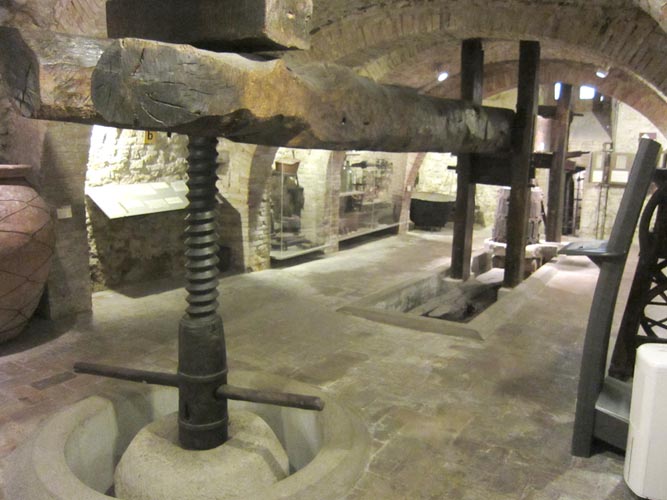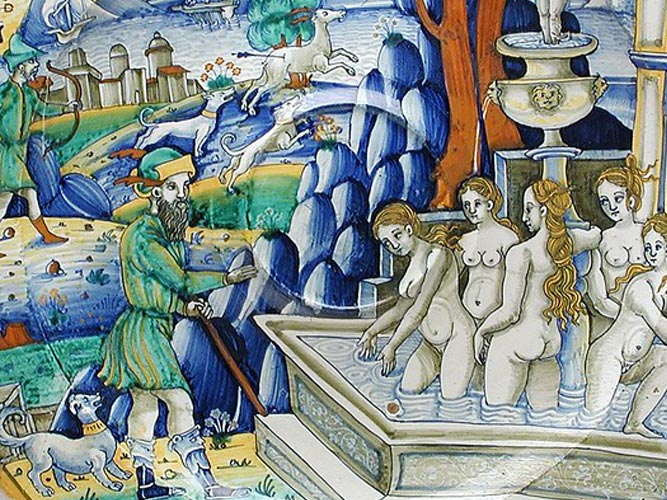A Taste of Art
TORGIANO
The Torgiano area was settled in Roman times, as is proved by archeological discoveries (remains of a villa, epigraphs). Later it was occupied by the Goths and the Lombards. In the 13th century the castle was built, and Torgiano came under the dominion of Perugia, and shared the same fortunes.
Following the defeat of Perugia in the “Salt War” (1540), Torgiano became a territory of the Papal States, and except for the period of French occupation (1798), it remained under papal rule until 1860, when it joined the Kingdom of Italy. Torgiano has two excellent museums, both run by the Fondazione Lungarotti: the Wine Museum, one of the most famous museums in Italy dedicated to wine, conceived and put together by Giorgio and Maria Grazia Lungarotti in 1974, housed in the 17th-century Baroque Palazzo Graziani-Baglioni; and the Olive and Olive Oil Museum, located in a small cluster of medieval buildings inside the castle walls, which has documents, engravings, antique jars for storing oil and other historical items on display. Nearby, Brufa, a locality known for being a stop on the Wine and Art Route, invites sculptors every year who leave their works in the area, creating an outdoor museum.

DERUTA
In the centre of Umbria, just 15 km from Perugia, Deruta stands on the hills bordering the left bank of the Tiber River. Its dominating view takes in the surrounding hills sloping down to the fertile fields of the enormous plain.
Deruta is well-known for its majolica and is a member of the Italian Association of Ceramics Towns with its certification mark for Artistic and Traditional Ceramics.
To be seen in the historical town centre is the San Michele Arcangelo city-gate, with traces of the ancient city walls to the sides. Beyond the gate are the remains of several ovens, the small Biordo Michelotti square and the church of S. Michele Arcangelo with its Romanesque-Gothic facade. The polygonal fountain was constructed by the Quinqueviri, public bankers, in 1848. Piazza dei Consoli opens out shortly beyond and features the Palazzo Comunale, town hall, that houses the Art Gallery containing an important collection of paintings from the churches of San Francesco, Sant’Antonio, from the Defunti di Ripabianca and the hospital of San Giacomo, and a part of Lione Pascoli’s valuable collection. Together with paintings by Perugino and Alunno.
In the vicinity can be seen the Santuario della Madonna dei Bagni, which contains an extraordinary


